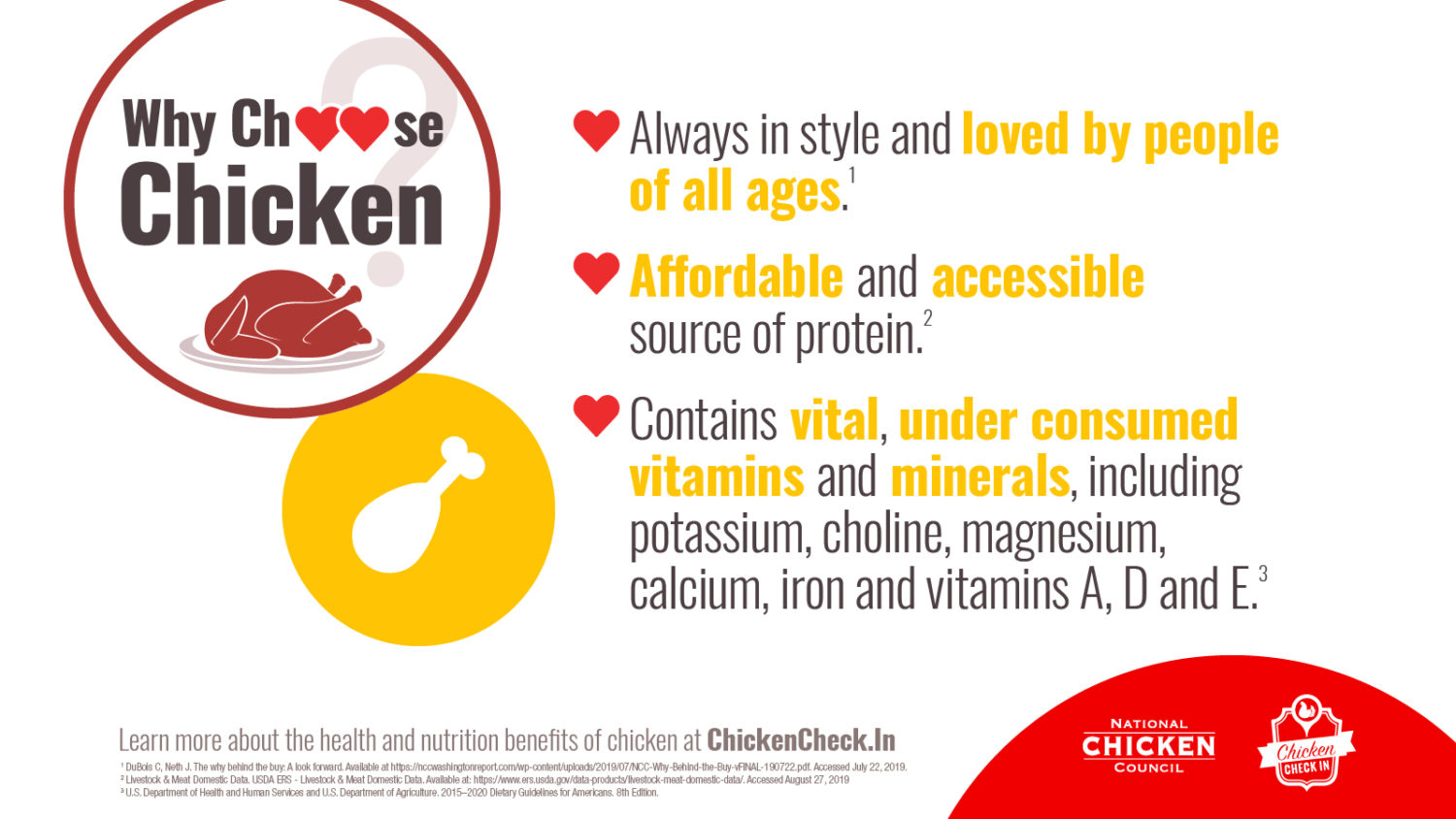4 Ways Chicken Helps Americans Meet The New Dietary Guidelines
Every five years, the U.S. Departments of Agriculture (USDA) and Health and Human Services (HHS) release the Dietary Guidelines for Americans. What’s abundantly clear in the 2020-2025 report is that chicken is a lean protein source that can help Americans meet the new guidelines across all life stages. Want to know how? Here are four ways.
But first, why are the dietary guidelines so important? They provide the nutritional foundation for federal nutrition programs and are used by healthcare professionals and public health officials to advise most people on healthy eating patterns. The 2020-2025 edition expands the nutritional guidance to include recommended healthy dietary patterns for infants and toddlers.
The theme for the 2020-2025 report is, “Make Every Bite Count,” and chicken is the perfect partner to help Americans realize the four key recommendations from this recent edition.
1. Chicken helps Americans follow a healthy dietary pattern at every life stage.

Lean proteins like chicken are important first foods for infants and toddlers (0-2 years old) as sources of iron, zinc, protein, choline, and long chain polyunsaturated fatty acids. Choline is actually a nutrient that pregnant or lactating women don’t get enough of but is critical for a child’s normal brain development – and chicken has it! Chicken continues to be a lean, nutritious protein that helps Americans meet this guideline from infancy to older adulthood.
2. Chicken lets Americans customize and enjoy nutrient-dense food choices to reflect personal preferences, cultural traditions, and budgetary considerations.

What’s great about this recent edition of the guidelines is that it provides a framework that can be customized to anyone’s needs and food preferences, as well as the cultural traditions and budgetary needs of all Americans. Better yet, it stresses enjoying nutrient-dense foods. What are those? Foods that provide vitamins, minerals, and other health-promoting components that can:
- Help close nutrient or food group gap
- Provide nutrients that many Americans don’t get enough of (like calcium, potassium, dietary fiber, and vitamin D
- Help Americans meet the food group recommendations in the guidelines
Chicken made with no or little added sugars, saturated fat, and sodium— is a nutrient-dense food! Not only is chicken affordable, convenient and family-friendly, but it’s the perfect nutrient-dense canvas for globally-inspired flavors, dishes and is already enjoyed in many cultural cuisines.
3. Chicken is a nutrient-dense food that helps Americans meet food group needs and stay within calorie limits.

Chicken is a nutrient-dense protein food that can be part of any healthy eating pattern. It can help Americans make nutrient-dense choices one meal at a time and can significantly improve the nutrients they get in every day. And when you look at the nutrient profile of chicken, it makes sense why. It’s no wonder chicken can be eaten in two of the three healthy dietary patterns supported in the guidelines (e.g. Healthy U.S.-Style and Health Mediterranean-Style).
4. Chicken fits into a healthy eating pattern that limits foods and beverages higher in added sugars, saturated fat, and sodium.

Lean cuts of meat or poultry, including chicken breast, are nutrient-dense foods that can help Americans meet this key recommendation. Chicken is naturally lower in sodium and fat – and even has heart-healthy unsaturated fats. There are plenty of ways to prepare chicken that meet the recommendations of expert health organizations and dietary guidance, like that in the 2020-2025 Dietary Guidelines for Americans.
Remember, meeting the guidelines is an important part of staying healthy at any age. No matter if you are a healthcare professional, public health official or someone just trying to eat healthier, know that however you implement the guidelines, chicken delivers the nutritious, lean protein our bodies need while creating healthy opportunities to discover new flavors and indulge in familiar favorites!
Interested in some recipes that can help you realize the key recommendations of the guidelines? Check them out here.